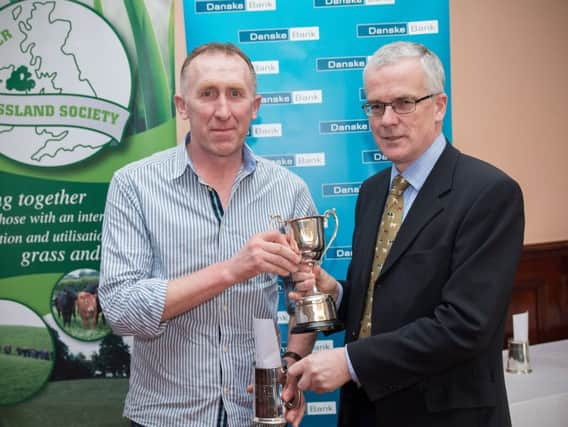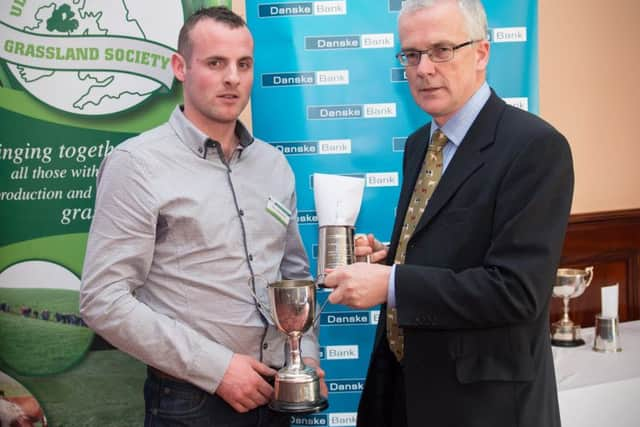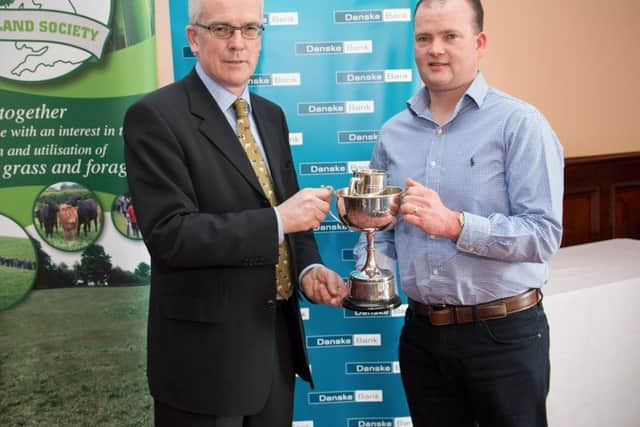Tremendous turnout of delegates for Ulster Grassland Conference


The event saw mark Blelock, a dairy farmer from Aldergrove in Co Antrim, succeed David Johnston as President. United Feeds’ Sam Watson was unanimously endorsed as the organisation’s President Elect.
The conference was marked by a number of excellent presentations.
Advertisement
Hide AdAdvertisement
Hide AdThe regular assessment of earthworm populations will provide farmers with important perspectives on the overall health status of their soils,” according to Kingshay consultant Jo Scammell.


“Numbers can be pretty meaningless in this context,” she said.
“The key indicators are the size of the worms and their colour. Those that are large, active and having a deep red hue are actively feeding. These, in turn, will be working to improve soil structure and its drainage capacity.
“In contrast, earthworms that are inactive and very pale in colour are not feeding. As a consequence, these will not be acting to improve soil structure. This scenario is commonly found in the wake of flooding, drought or the inappropriate spreading of slurry.”
Advertisement
Hide AdAdvertisement
Hide AdScamell told conference delegates that a small spade should be one of the most important tools on every farm.


“Monitoring what is happening below the surface is crucially important in determining what is happening within a soil. Gauging earthworm numbers is essential. But the smell of a soil sample is also a key barometer of its overall health status.
“If a strong compost odour is evident, then the soil’s ability to grow high yielding crops is evident. But a rancid or putrefying smell is an immediate indicator of poor soil structure.”
Scammel pointed out that calcium and sodium are soil nutrients that must never be overlooked.
Advertisement
Hide AdAdvertisement
Hide Ad“The reality is that pH is not always a true indicator of soil calcium availability. This is why gypsum can be used effectively as part of a fertiliser application programme.


“Salt should be applied to grassland, particularly those swards that have received high potash applications, in order to improve forage palatability.
“I recommend an application of 50kg/ac in the early summer. Early spring grass is inherently palatable.”
Home-produced forage is the most cost effective feed source on every Irish livestock farm, according to Grassland Agro’s Dr Stan Lalor.
Advertisement
Hide AdAdvertisement
Hide Ad“And at a time of increasing price pressure, this is a message that must be brought home in the strongest possible terms at individual farm level. People often debate the true value of land,” Lalor told conference delegates


“But, from an agricultural point of view, the perimeter of a field merely marks out the soil that is contained therein. So it is the quality of the soil that really determines the value of individual land parcels.”
Lalor said that 90% of Irish soil samples submitted for analysis will be deficient in terms of either pH value, potash or phosphate.
“Teagasc surveys have repeatedly confirmed these findings.
“This means that, without recourse to testing, farmers will be wrong nine times+ out of 10 when it comes to accurately assessing the fertiliser requirements of their crops.
Advertisement
Hide AdAdvertisement
Hide AdAccording to Lalor, the optimal pH value for Irish grassland soils is between 6.3 and 6.5.
“We live in a high rainfall area with the result that calcium and other nutrients are being continually washed out of our soils. This process acts to decrease pH levels.
“Adding lime will counteract this process. Soils with optimal pH levels will have the capacity to maximise the quantity of soil nutrients that are available to growing crops.”
Lalor confirmed that slurry should, primarily, be regarded as a valuable source of potash and phosphate.
Advertisement
Hide AdAdvertisement
Hide Ad“In relative terms slurry has a much higher economic value today than would have been the case 15 years ago.
“Research has confirmed that phosphate is critically important in boosting early season grass growth rates.
“However, recent trials point to the benefit of sowing out small quantities of phosphate in the early summer, in order to keep forage P levels right at that time of the year.”